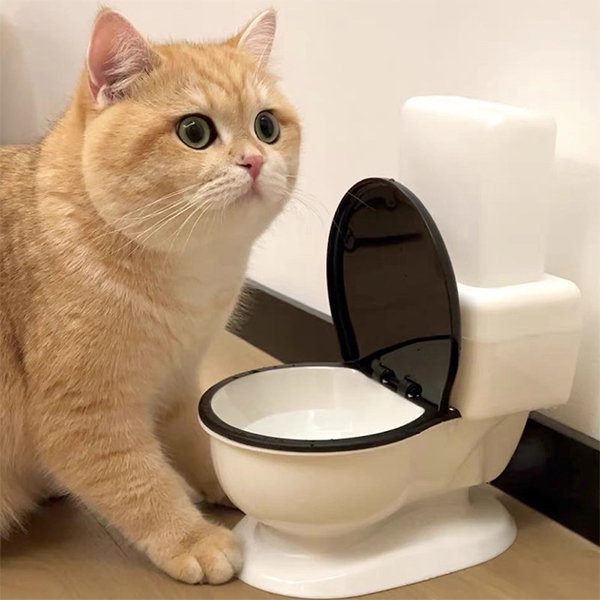The Dangers of Flushing Cat Poop Down Your Toilet - Tips for Better Handling
The Dangers of Flushing Cat Poop Down Your Toilet - Tips for Better Handling
Blog Article
The article author is making a few good points about How to Dispose of Cat Poop and Litter Without Plastic Bags overall in this post further down.

Intro
As feline proprietors, it's vital to bear in mind how we get rid of our feline friends' waste. While it might seem practical to flush cat poop down the commode, this technique can have detrimental consequences for both the atmosphere and human health.
Alternatives to Flushing
Thankfully, there are safer and more liable means to dispose of cat poop. Take into consideration the complying with options:
1. Scoop and Dispose in Trash
The most common approach of taking care of cat poop is to scoop it right into a naturally degradable bag and toss it in the garbage. Make certain to use a dedicated trash inside story and throw away the waste immediately.
2. Usage Biodegradable Litter
Opt for eco-friendly cat trash made from products such as corn or wheat. These litters are environmentally friendly and can be safely dealt with in the garbage.
3. Hide in the Yard
If you have a backyard, consider burying cat waste in a marked area away from vegetable yards and water resources. Be sure to dig deep enough to prevent contamination of groundwater.
4. Install a Pet Waste Disposal System
Invest in an animal waste disposal system especially created for pet cat waste. These systems make use of enzymes to break down the waste, reducing odor and environmental effect.
Health and wellness Risks
Along with ecological issues, flushing cat waste can also pose health threats to people. Pet cat feces may have Toxoplasma gondii, a parasite that can cause toxoplasmosis-- a potentially extreme disease, particularly for pregnant women and people with weakened immune systems.
Ecological Impact
Purging cat poop introduces damaging pathogens and parasites right into the supply of water, posing a considerable danger to aquatic ecological communities. These pollutants can negatively influence aquatic life and concession water high quality.
Final thought
Responsible pet dog possession expands past providing food and shelter-- it also involves correct waste management. By avoiding purging cat poop down the bathroom and going with alternate disposal approaches, we can minimize our environmental footprint and safeguard human health.
Why Can’t I Flush Cat Poop?
It Spreads a Parasite
Cats are frequently infected with a parasite called toxoplasma gondii. The parasite causes an infection called toxoplasmosis. It is usually harmless to cats. The parasite only uses cat poop as a host for its eggs. Otherwise, the cat’s immune system usually keeps the infection at low enough levels to maintain its own health. But it does not stop the develop of eggs. These eggs are tiny and surprisingly tough. They may survive for a year before they begin to grow. But that’s the problem.
Our wastewater system is not designed to deal with toxoplasmosis eggs. Instead, most eggs will flush from your toilet into sewers and wastewater management plants. After the sewage is treated for many other harmful things in it, it is typically released into local rivers, lakes, or oceans. Here, the toxoplasmosis eggs can find new hosts, including starfish, crabs, otters, and many other wildlife. For many, this is a significant risk to their health. Toxoplasmosis can also end up infecting water sources that are important for agriculture, which means our deer, pigs, and sheep can get infected too.
Is There Risk to Humans?
There can be a risk to human life from flushing cat poop down the toilet. If you do so, the parasites from your cat’s poop can end up in shellfish, game animals, or livestock. If this meat is then served raw or undercooked, the people who eat it can get sick.
In fact, according to the CDC, 40 million people in the United States are infected with toxoplasma gondii. They get it from exposure to infected seafood, or from some kind of cat poop contamination, like drinking from a stream that is contaminated or touching anything that has come into contact with cat poop. That includes just cleaning a cat litter box.
Most people who get infected with these parasites will not develop any symptoms. However, for pregnant women or for those with compromised immune systems, the parasite can cause severe health problems.
How to Handle Cat Poop
The best way to handle cat poop is actually to clean the box more often. The eggs that the parasite sheds will not become active until one to five days after the cat poops. That means that if you clean daily, you’re much less likely to come into direct contact with infectious eggs.
That said, always dispose of cat poop in the garbage and not down the toilet. Wash your hands before and after you clean the litter box, and bring the bag of poop right outside to your garbage bins.
https://trenchlesssolutionsusa.com/why-cant-i-flush-cat-poop/

We had been made aware of that editorial about Can You Flush Cat Poo or Litter Down the Toilet? through an associate on another web blog. Sharing is nice. One never knows, you could be doing someone a favor. Thanks for your time. Don't forget to visit our website back soon.
Click Here Report this page